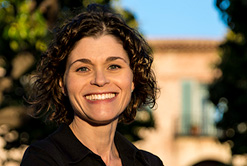As I mentioned earlier this week, I’ve been getting a lot of questions about how the Scramble works. So please see my last entry for a good description and a complete calendar for the process in 2010.
Now here’s a step-by-step plan for the Scramble:
1. In the weeks before, consider reworking your personal statement for a second field if you think you might Scramble into a second specialty. For example, if you are applying in Emergency Medicine and think you may not match, it might be worth reworking your personal statement for Family Medicine, if you would be happy in that field as well, as Family Medicine is less competitive. (Of course the problem with scrambling into another field is that your application as a whole will be focused toward the first specialty; however, it still might be worth a try, especially for a less competitive field.) You can upload the new personal statement to MyERAS before the Scramble without assigning it to a residency program.
2. On Monday, March 15, 2010 applicant matched and unmatched information is posted to the NRMP web site at 12:00 noon EST. If you find out then that you have not matched, plan to take the next day off.
3. Create a PDF file of your entire application for emailing and also have copies available for faxing.
4. Because, unfortunately, the Scramble occurs through two means – the official one, which is ERAS – and the informal one, which is faxing and phone calls to programs – it helps to organize a few friends and some supplies, including a phone line, a fax line and a computer, for March 16, 2010.
5. On Tuesday, March 16, 2010 at noon the NRMP’s Dynamic List of Unfilled Programs is released. This list includes all of the residencies that have unfilled slots. Thus, after looking at the list, you select the programs to which you want to apply through ERAS. Remember an applicant may apply to a maximum of thirty new programs in addition to fifteen “old” programs (residencies to which s/he applied during the regular ERAS season). There is no charge for applying to programs during the Scramble.
6. Soon after selecting the programs to which you want to apply through ERAS, you begin calling your top choices, while trying to send out your PDF to those programs. This is the chaotic part of the Scramble. Knowing someone at a program can make a difference.
7. Hopefully, at that point you will connect with someone at a residency program who will offer you a phone interview. With luck, you will be offered a spot.
For help with your residency application, including mock interviews, contact me. I am holding some emergency slots open for those who have urgent requirements.

